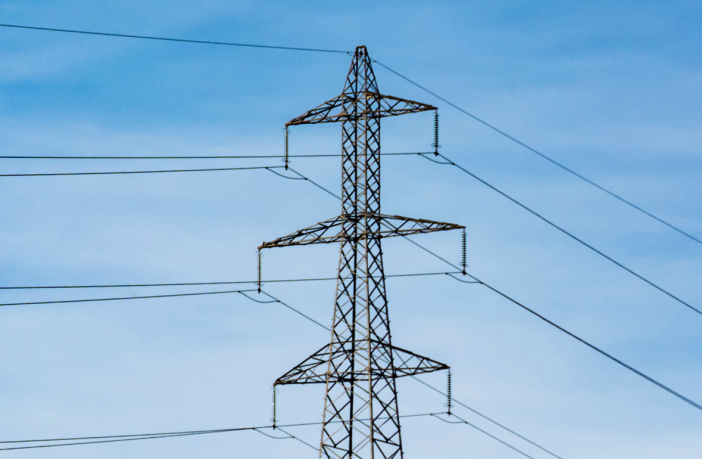- A new report from the Blended Finance Taskforce, Stellenbosch University’s Centre for Sustainability Transitions and the Centre for Renewable and Sustainable Energy Studies called “Better Finance, Better Grid” finds that using catalytic capital to strengthen the transmission grid is both critical and urgent to transition to a more secure and equitable power system in South Africa.
A national strategic programme of investment is needed to build and connect the renewable energy generation that is critical to energy security, job creation and low-carbon growth. As stated by South Africa’s Minister of Finance, Enoch Godongwana, “The lack of reliable electricity supply is the biggest economic constraint” in the country.
The stabilisation and transformation of South Africa’s energy framework will in large part depend on the successful build out of the transmission grid, led by the newly established National Transmission Company of South Africa (NTCSA). Based on the budget speech, Eskom’s future will no longer be about generating electricity, but about transmission and distribution. “Better Finance, Better Grid” provides a path of action for targeted investment to address short term transmission grid constraints and scale investment in new transmission infrastructure for the longer term.
“The grid has been the Cinderella of the energy system for many years. It has been neglected, and therefore there are large sections that need to be rehabilitated and major extensions are needed. Moreover, more than 3 GW of renewable generation projects out of bid window 6 are not happening because there is no capacity to connect them.” ~ Professor Mark Swilling, Co-Director of the Centre for Sustainability Transitions.
OPTIMISING CURRENT INFRASTRUCTURE
The report finds that the only way to add new renewable generation capacity in the short term (4-5 GW per year) is by optimising the use of existing transmission infrastructure capacity. Building new infrastructure typically takes 7-10 years and therefore does not provide a solution for 16-20 GW of new generation capacity to be built and connected in the coming 4-5 years.
The report lays out the options for optimising the use of current infrastructure by:
- Focusing new generation projects in areas with existing transmission grid capacity
- Maximising the amount of generation capacity connected at any specific location
- Upgrading infrastructure with additional transformers
This could unlock up to 17GW of grid capacity; connecting renewables at decommissioning coal sites and increasing rooftop solar generation potentially adding up to 18GW of additional capacity.
“Current grid constraints can to some extent be alleviated through actions like co-locating solar and wind generation, oversizing renewable capacity and deploying batteries. This in essence allows more energy to be fed into the grid using the same grid connection, and also reduces the variability in power generation driven by weather conditions. Quantifying the financial value of such actions at existing connection points will be a logical next step towards deployment.” ~ Professor Bernard Bekker, Associate Director of the Centre for Renewable and Sustainable Energy Studies
Simultaneously, the build rate of new transmission infrastructure must increase by 8 times the current rate to connect the full 53 GW generation capacity required for energy security until the early 2030s.[1] To ensure sufficient transmission capacity, the grid build rate needs to increase from ~300 to ~2,300 km per year. Even more is needed for new generation from 2030-50 to meet power demand.
A national strategic program of investment, that builds on South Africa’s global and domestic leadership to finance the just energy transition, can help overcome existing barriers to achieving the required transmission infrastructure build rate.
ALTERNATIVE FINANCING MODELS NEEDED
One of the key barriers is access to the ~235-372 bn ZAR (~ USD 14-22 billion) of capital required to finance new transmission infrastructure in the coming 10-12 years. Alternative models for financing the transmission infrastructure off Eskom’s balance sheet can help increase access to the necessary capital.
Independent Transmission Projects (ITPs) are likely the most successful model to achieve off-balance sheet financing needs for new transmission infrastructure. ITPs are a proven model in several emerging markets including Brazil, India, Peru and Kenya. They can be conducted for selected projects, allow for flexibility and require relatively limited regulatory changes.
Catalytic allocation of public capital can play a crucial role in financing and de-risking new transmission infrastructure and enabling a pathway to a more secure and equitable power system. Through project finance structures such as ITPs, capital can be unlocked for building, maintaining and/or operating transmission assets. To reduce the cost of capital for such projects, some risks need to be addressed, especially on long-term revenue stability. Concessional loans or development guarantees to ITPs would help mitigate certain timing and investment risks to lower the cost of capital. International climate finance like the $8.5 billion pledged by rich countries for the Just Energy transition under the “JETP” country financing platform could be one source of this catalytic funding, deployed through development banks like the DBSA and the AfDB.
Link to the full report HERE
Author: Bryan Groenendaal















